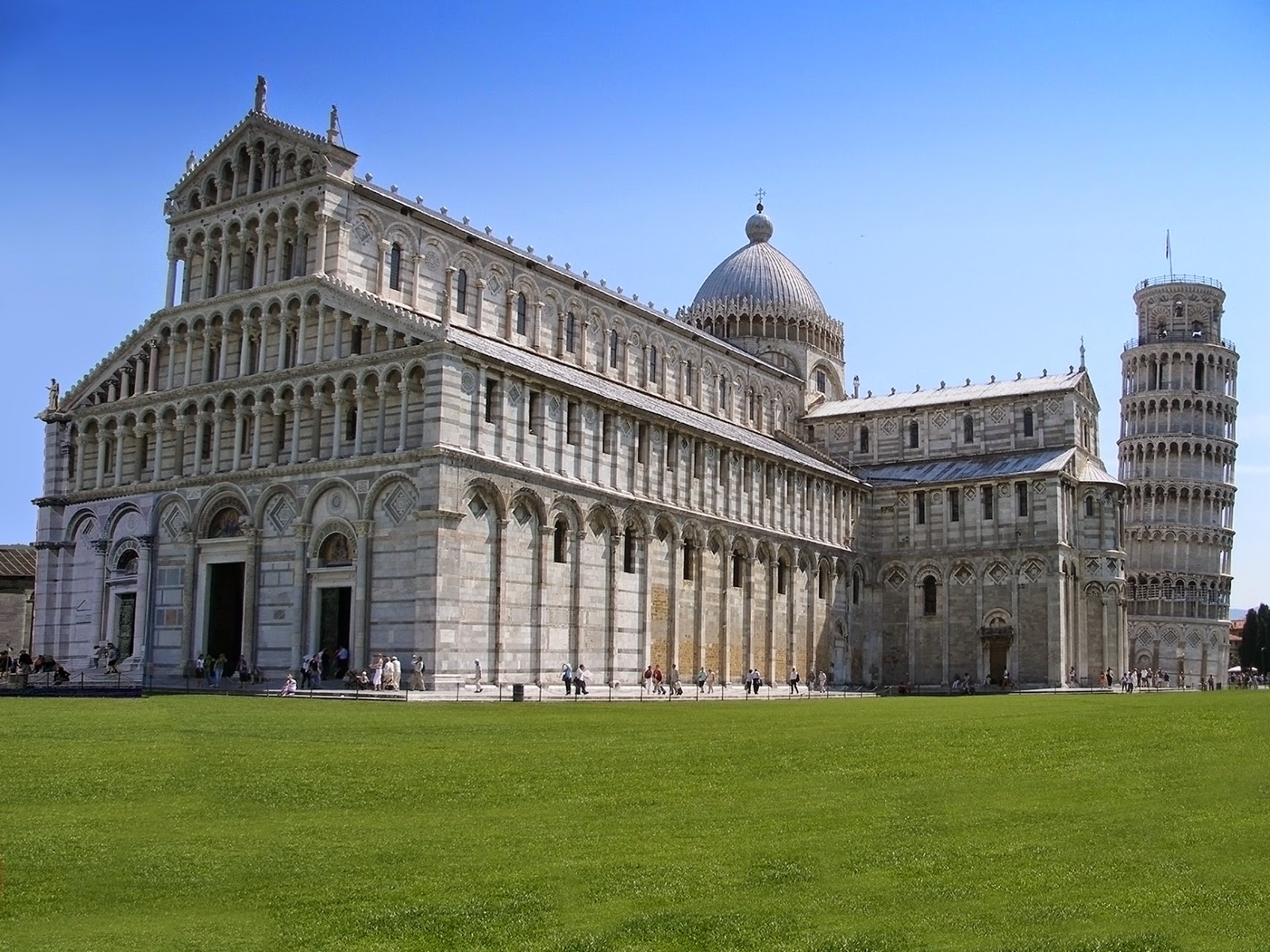The Piazza dei Miracoli (Italian: Square of Miracles), formally known as Piazza del Duomo (Italian: Cathedral Square), is a wide walled area located in Pisa, Tuscany, Italy, recognised as an important centre of of European medieval art and one of the finest architectural complexes in the world.
Considered a sacred area by its owner, the Catholic Church, the square is dominated by four great religious edifices: The Pisa Cathedral, the Pisa Baptistry, the Leaning Tower of Pisa, and the Camposanto Monumentale (Monumental Cemetery). Partly paved and partly grassed, the Piazza dei Miracoli is also the site of the Ospedale Nuovo di Santo Spirito (New Hospital of the Holy Spirit), which houses the Sinopias Museum (Italian: Museo delle Sinopie), and the Cathedral Museum (Italian: Museo dell'Opera del Duomo).
The name Piazza dei Miracoli was created by the Italian writer and poet Gabriele d'Annunzio who, in his novel "Forse che sì forse che no" (1910), described the square as the "prato dei Miracoli" or the "meadow of miracles". The square is sometimes called the Campo dei Miracoli (Field of Miracles). In 1987 the whole square was declared a UNESCO World Heritage Site.
The Leaning Tower of Pisa (Italian: Torre pendente di Pisa) or simply the Tower of Pisa (Torre di Pisa) is the campanile, or freestanding bell tower, of the cathedral of the Italian city of Pisa, known worldwide for its unintended tilt to one side. It is situated behind the Cathedral and is the third oldest structure in Pisa's Cathedral Square, after the Cathedral and the Baptistry. The tower's tilt began during construction, caused by an inadequate foundation on ground too soft on one side to properly support the structure's weight.
The tilt increased in the decades before the structure was completed, and gradually increased until the structure was stabilised (and the tilt partially corrected) by efforts in the late 20th and early 21st centuries. The height of the tower is 55.86 metres from the ground on the low side and 56.67 metres on the high side. The width of the walls at the base is 2.44 m. Its weight is estimated at 14,500 metric tons. The tower has 296 or 294 steps; the seventh floor has two fewer steps on the north-facing staircase.
Prior to restoration work performed between 1990 and 2001, the tower leaned at an angle of 5.5 degrees, but the tower now leans at about 3.99 degrees. This means that the top of the tower is displaced horizontally 3.9 metres from where it would be if the structure were perfectly vertical.
This post is part of the Spiritual Sundays meme,
and also part of the inSPIREd Sunday meme,
and also part of the Scenic Weekends meme.














What fantastic photos! I'd love to visit this.
ReplyDeletei would love to visit there. i bet it is just amazing to see in person. just breathtaking!! ( :
ReplyDeleteWhat a cathedral. The tower is a few bubbles out of plumb. Tom The Backroads Traveller
ReplyDeleteMagnificent architecture and photography.
ReplyDeleteMersad
Mersad Donko Photography
I wonder if the name of Pisa would be as famous if it didn't have the leaning tower. I enjoyed the photos inside the Cathedral.
ReplyDeleteOne of the world's most known, of course it's wonderful.I've seen many photos of the leaning tower but never of the cathedral, its interior and the cemetery. They are all with such a grand beauty. Thanks for sharing all of them.
ReplyDeleteGorgeous pics!
ReplyDelete